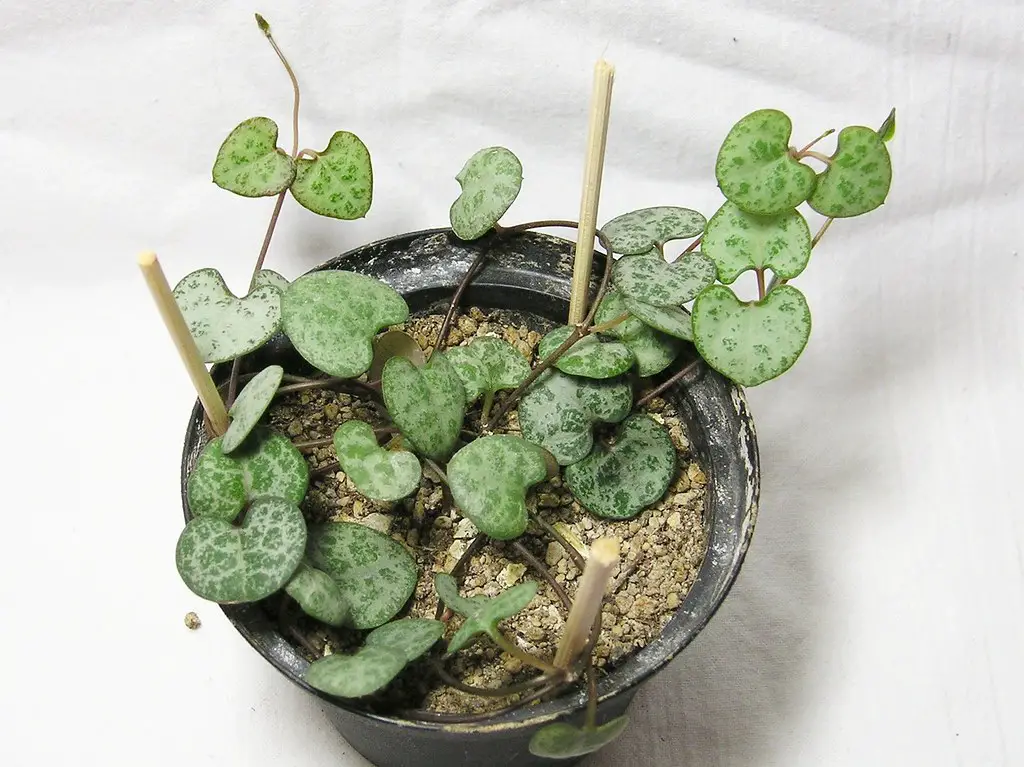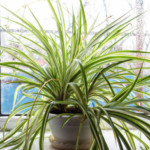If you’re a plant enthusiast or just looking to expand your indoor garden, the String of Hearts (Ceropegia woodii) is a charming and low-maintenance choice. Its delicate heart-shaped leaves and trailing vines make it a favorite among plant lovers. One of the most exciting aspects of owning a String of Hearts is the opportunity to propagate new plants from your existing ones. In this guide, we will walk you through the process of propagating your String of Hearts successfully.
1. Understanding the String of Hearts Plant
Before diving into the propagation process, let’s get to know your String of Hearts plants a little better. This trailing succulent is native to South Africa and gets its name from its distinctive heart-shaped leaves. The leaves are typically green with silver marbling, giving them a unique and eye-catching appearance.
String of Hearts is an excellent choice for indoor gardening because it’s relatively low-maintenance. It thrives in bright, indirect sunlight and can tolerate some neglect. However, to keep your plant healthy and encourage propagation, you’ll need to provide the right conditions and care.
2. When to Propagate
The best time to propagate your String of Hearts is during its growing season, which typically spans from spring to early summer. This is when the plant is actively producing new growth, making it more likely that your cuttings will root successfully.
3. Propagation Methods
Now, let’s explore the three main methods for propagating your String of Hearts: water propagation, soil propagation, and tuber propagation.
a. Water Propagation
Water propagation is one of the most popular methods for propagating String of Hearts because it allows you to see the roots develop. Here’s how to do it:
- Select Healthy Cuttings: Choose a healthy and mature stem from your existing plant. Look for stems that are at least a few inches long and have a few leaves.
- Cut the Stem: Use clean, sharp scissors or pruning shears to cut the stem just below a leaf node. A leaf node is where a leaf connects to the stem.
- Place in Water: Place the cut end of the stem in a jar or vase with enough water to submerge the cut node. Change the water every few days to prevent rot.
- Root Development: After a few weeks, you should start to see roots forming. Once the roots are a few inches long, your cutting is ready for planting in soil.
b. Soil Propagation
Soil propagation is another effective method and can be done as follows:
- Choose Suitable Soil: Select a well-draining potting mix. You can also mix in some perlite or sand to improve drainage.
- Prepare the Cutting: Take a healthy cutting as described earlier.
- Plant in Soil: Create a small hole in the soil with your finger or a stick and insert the cutting, burying the cut node. Water the soil lightly.
- Maintain Moisture: Keep the soil consistently moist but not waterlogged. You can cover the cutting with a plastic bag or a clear plastic container to create a mini greenhouse effect and promote humidity.
- Root Development: In a few weeks, your cutting should take root, and you’ll see new growth.
c. Tuber Propagation
Tuber propagation is a less common but equally effective method:
- Identify Tubers: Inspect your String of Hearts plant for tubers, which are small, round structures that store water and nutrients.
- Separate Tubers: Carefully remove one or more tubers from the plant, making sure to keep them intact.
- Plant Tubers: Plant the tubers in a small pot filled with well-draining soil. Bury them just beneath the soil surface.
- Water Sparingly: Water the soil lightly, and then wait for the tubers to produce new growth.
- Transplant: Once the new growth is established and the plant is growing well, you can transplant it into a larger pot if desired.
4. Taking Care of the New Cuttings
No matter which propagation method you choose, it’s essential to care for your new String of Hearts cuttings properly. Here are some tips:
- Light: Provide bright, indirect sunlight for your cuttings. Avoid harsh, direct sunlight, which can scorch the delicate leaves.
- Watering: Allow the soil to dry slightly between waterings. Overwatering can lead to root rot, so err on the side of underwatering.
- Temperature: Keep your cuttings in a warm environment. String of Hearts prefers temperatures between 70°F to 80°F (21°C to 27°C).
- Fertilizing: During the growing season (spring to early autumn), feed your cuttings with a diluted, balanced liquid fertilizer once a month.
- Repotting: As your String of Hearts cuttings grow, you may need to repot them into larger containers. Choose a pot that’s only slightly larger than the current one to avoid over-potting.
- Pest Control: Keep an eye out for common indoor plant pests like aphids and mealybugs. If you notice any, treat your plants promptly.
Now, let’s address some common questions about propagating String of Hearts.
5. FAQs About String of Hearts Propagation
Q1: Can I propagate String of Hearts from a single leaf cutting? No, it’s best to propagate from stem cuttings with at least one leaf node. A single leaf won’t develop into a new plant on its own.
Q2: How long does it take for String of Hearts cuttings to root? It usually takes a few weeks to a few months for cuttings to develop roots, depending on factors like temperature and humidity.
Q3: Can I propagate my String of Hearts in the winter? While it’s possible to propagate during the winter, it may take longer for cuttings to root due to lower light levels and cooler temperatures.
Q4: My cuttings are getting leggy. What should I do? If your cuttings start to grow long and leggy, it’s a sign they need more light. Move them to a brighter location with indirect sunlight.
Q5: When should I transplant my propagated String of Hearts into a larger pot? Transplant your cuttings into a larger pot when they outgrow their current container, typically after a year or when the roots become crowded.
In conclusion, propagating String of Hearts can be a rewarding experience for plant enthusiasts. Whether you choose water propagation, soil propagation, or tuber propagation, with the right care and patience, you can watch your cuttings grow into beautiful, cascading vines. Remember to provide the ideal conditions, monitor their progress, and enjoy the process of nurturing new life in your indoor garden. Happy propagating!






